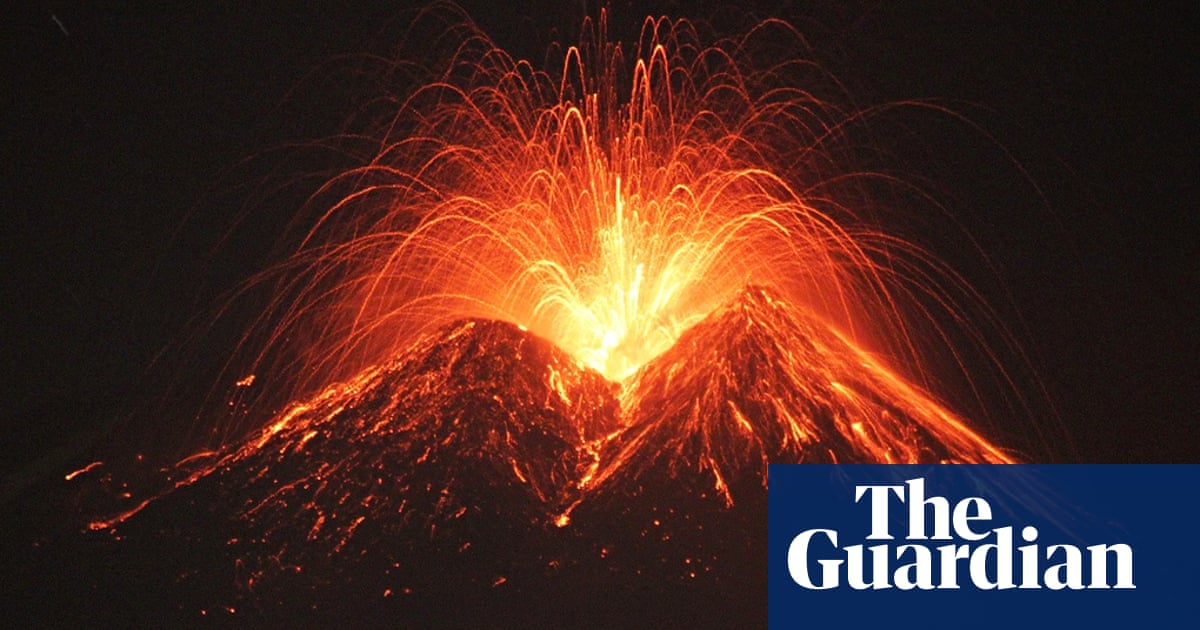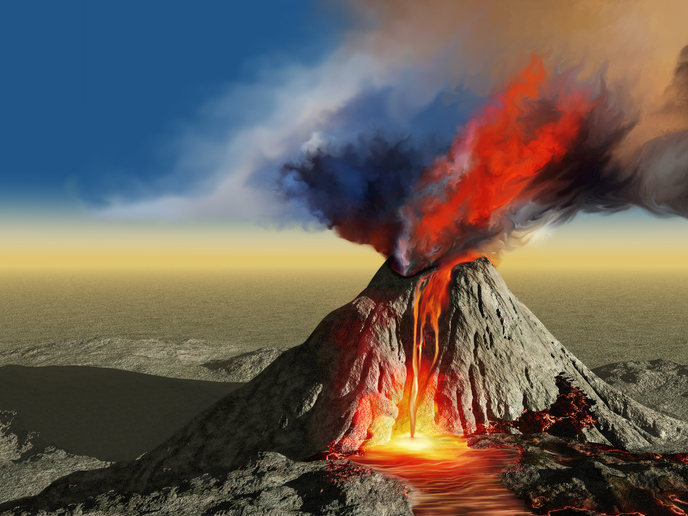Interactions also occur among the spheres. Due to its high altitude Rwanda enjoys a tropical temperate climate.

Climate Explained How Volcanoes Influence Climate And How Their Emissions Compare To What We Produce
Peterhartree CC BY-SA 20 Another climate-related phenomenon thats believed.

. The study relies on more than 20 ice cores from Greenland and. For example a dark lava flow absorbs more of the solar energy than a desert soil so a large enough lava flow could warm a local region. 1000 came after big volcanic eruptions with the coldest summers occurring shortly after the largest volcanic events.
But a much larger influence on climate comes from volcanic gases erupted into the atmosphere that spread out and encircle the planet. Throughout human history large volcanic eruptions have affected the year-to-year variability of the Earths climate and. Lava flows pyroclastic flows and lahars pose great risk to those living in the proximity of a volcano while large explosive eruptions can affect the entire planet by filling the atmosphere with ash.
1 and 2 which occurred many. Results show a significant relationship between climate change anxiety and mental health with climate change anxiety predicting 135 of the overall Mental Health Index variance. The June 1991 eruption of the Phillippine volcano Mount Pinatubo provides an important opportunity to test existing understanding and extend previous emperical analyses of volcanic effect.
These eruptions include ash and not magma. Climate Change May Increase Volcanic Eruptions. Through subtle changes and dramatic explosions they intrigue scientists and often strike fear into societies.
Owens And Theodore Them The Conversation. The enormous volumes of gas and volcanic particulate matter ejected into the stratosphere by this eruption the second largest of the 20th century triggered a 05C cooling that persisted for. A 2017 study of Iceland volcanic activity 4500 to 5500 years ago found a link between deglaciation and increased volcanic activity.
However human contributions to the carbon cycle are more than 100 times those from all the volcanoes in the world - combined. Following are the different types of volcanic eruptions. A new tool for analysing climate response to volcanism.
They are driven by the heat. The average annual temperature ranges between 16 and 20 C without significant variations. Such a massive and persistent 192-y series of halogen-rich volcanic eruptions is unique within the 68-ky WD ice core record and the event straddles the most significant abrupt climate change recorded in Antarctic ice cores and other SH climate proxies during the 10-ky period of the last deglaciation Figs.
Major eruptions alter the Earths radiative balance because volcanic aerosol clouds absorb terrestrial radiation and scatter a significant amount of the incoming solar radiation an effect known as radiative forcing that can last from two to three years following a volcanic eruption. And effect relationship between an event and a sphere is called an interaction. We identify the spatial climate response to historic eruptions in the surface air temperature and mean-sea- level pressure record and use this information to assess the.
Volcanoes are windows into the interior of the Earth. Volcanic eruptions cause short-term climate changes and contribute to natural climate. Rapid global warming has caused an increase in volcanic eruptions in the past a new study finds Image credit.
In comparison while volcanic eruptions do cause an increase in atmospheric CO 2 human. However the effects dont depend on the magnitude of the. Volcanic eruptions once caused mass extinctions in the oceans could climate change do the same.
For example a change in the atmosphere can cause a change in the hydrosphere and vice versa. Laki Iceland The 1783-1784 fissure eruption produced a haze that engulfed most of Europe. Large quantities of aerosols emitted during the effusive fissure eruption resulted in a significant global volcanic-induced cooling episode with climate impacts felt thousands of miles away.
Owens Florida State University Theodore R. Volcanic eruptions are often discussed in relation to climate change because they release CO 2 and other gases into our atmosphere. Joseph McConnell a research professor at the Desert Research Institute which is part of the Nevada System of Higher Education in the US.
A guest post from Dr. Significantly climate change anxiety was associated with the MHI-38s global scale of Psychological Distress but not with the global scale of Psychological Well-being. Statistical validation of a relationship between explosive volcanic eruptions and the El NiñoSouthern Oscillation is a step forward in.
This correlation illustrates an incipient relationship between volcanic activity climate change and cultural behavior. Volcanic eruptions once caused mass extinctions in the oceans could climate change do the same. Rainfall is abundant although it has.
Gases and ash injected by powerful volcanic eruptions into the atmosphere can influence the climate. The relationship between climate change and volcanic eruptions became a hot research topic following the immense and devastating 1991 eruption of Mount Pinatubo in the Philippines. Volcanoes are the main locations for energy and mass exchange between the interior of the Earth and the atmosphere and thus play a critical role in the climate and habitability of the planet.
Humans biosphere built a dam out of rock materials lithosphere. Types of Volcanic Eruptions. Cultural historical successions and site occupation in areas between the southern Cascades of Washington and the Clearwater River drainage of north-central Idaho appear to be contemporaneous with regional and hemispheric records of volcanic activity and.
GHGs and aerosols How volcanic eruptions changed climate and human history. Edwards notes Icelands unique geology makes it a very volcanically active compared with many other places howeverand also perhaps more. November 13 2018 645am EST Jeremy D.
Types of volcanic eruptions depend on various factors such as chemistry of magma temperature viscosity volume presence of groundwater and water and gas content. As the climate warms eruptions seem to get bigger. Below are a few examples.
Geological Survey Hawaii. Climate is the average prevailing weather conditions for a specific geographical region over a period usually exceeding 30 years. A University of Washington glaciologist is the second author of a study published July 8 in Nature that shows that 15 of the 16 coldest summers recorded between 500 BC.
Lava flows pyroclastic flows and lahars pose great risk to those living in the proximity of a volcano while large explosive eruptions can affect the entire planet by filling the atmosphere with ash and sulfate particles thereby modify the global climate. Volcanic ash can impact air quality disrupt aviation and change ocean biogeochemistry among other effects.
What Do Volcanoes Have To Do With Climate Change Climate Change Vital Signs Of The Planet

Can Volcanoes Tackle Climate Change Books The Guardian

Past Volcanic Eruptions Help Reveal Climate Future Sharp Project Results In Brief H2020 Cordis European Commission
0 Comments